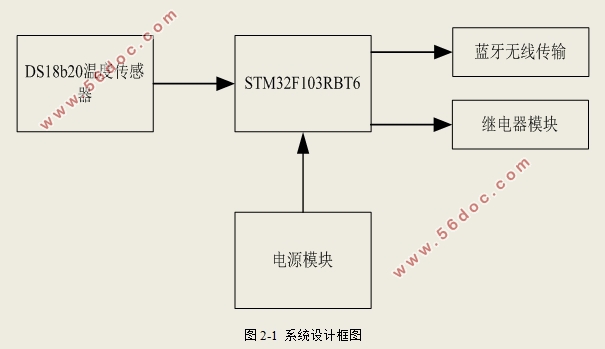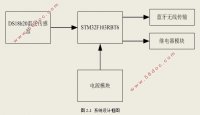基于STM32的蓝牙无线温度采集系统设计
来源:56doc.com 资料编号:5D26596 资料等级:★★★★★ %E8%B5%84%E6%96%99%E7%BC%96%E5%8F%B7%EF%BC%9A5D26596
资料以网页介绍的为准,下载后不会有水印.资料仅供学习参考之用. 密 保 惠 帮助
资料介绍
基于STM32的蓝牙无线温度采集系统设计(论文16500字)
摘要:随着物联网的发展和智能手机的普及,传感器连接互联网成了大趋势。传统的温度采集是采用现场总线的方式连接多个温度结点,控制温度主要依靠人操作机械开关。其缺点显而易见,读取温度只能在统一的监控室内,而且线路的铺设成本高,温度结点出故障时需要拆除线路检修,温度控制对人力成本要求高,可能存在误操作等很大的安全隐患。鉴于此,本设计采用高性能的STM32嵌入式处理器,连接数字式温度传感器,采用蓝牙无线的方式传出温度值并且接收控制命令。温度采集可以在非接触式的方式下进行,可以通过智能手机读取温度数据。整个系统采用嵌入式系统,模拟电路较少,提高系统的稳定性。并且蓝牙传输方式应用范围广,接收端形式多样。
关键字: STM32;物联网;嵌入式;蓝牙通讯
Design of temperature acquisition system based on STM32 embedded processor and bluetooth technology
Abstract: With the development of the Internet of things and the popularity of smart phones, sensors connected to the Internet has become a major trend. The traditional temperature acquisition is the way of using the field bus to connect more than one temperature node, the control temperature mainly rely on people to operate the mechanical switch. Its shortcomings are obvious, read the temperature only in a unified monitoring indoor and line of the high cost of laying, the junction temperature failure to dismantle line maintenance, temperature control of high demand for labor costs may misuse and great security risks exist. In view of this, this design uses the high performance STM32 embedded processor, connect the digital temperature sensor, using Bluetooth wireless way to spread the temperature value and receive the control command. Temperature acquisition can be carried out in a non-contact manner, the temperature data can be read through the smart phone. The whole system adopts embedded system, the analog circuit is less, and the stability of the system is improved. And Bluetooth transmission mode has a wide application range, and the receiving end is diverse.
Keywords: STM32; Internet of things; embedded; Bluetooth communication

目 录
摘要 I
Abstract II
1绪论 1
1.1 课题应用背景 1
1.2 本论文设计的主要内容 1
2系统方案设计 2
2.1 微控制器的选择与论证 3
2.2 无线模块的选择与论证 3
2.3 温度传感器的选择与论证 4
3硬件设计 6
3.1 控制模块 6
3.1.1 微控制器的发展 6
3.1.2 微控制器模块 7
3.1.3 STM32单片机 7
3.1.4 STM32外部电路 9
3.2 蓝牙无线传输电路 11
3.2.1蓝牙技术简介 11
3.2.2蓝牙模块与单片机的连接 11
3.3 温度传感器模块电路 12
3.3.1 DS18b20的内部结构 12
3.3.2 DS18b20控制方法 13
3.3.3 DS18b20与STM32连接电路图 14
3.4 电源模块电路 15
3.5 继电器控制电路 15
3.6 蓝牙模块电路 16
4系统软件设计 16
4.1 软件开发环境介绍 16
4.2 系统总体流程图 17
4.3 温度传感器控制程序设计 18
4.4 蓝牙无线传输程序设计 19
5调试与检测 21
5.1 硬件的焊接 21
5.2 实物调试 22
5.2.1 温度传感器的调试 23
5.2.2 蓝牙无线传输的调试 23
5.3 调试结论 24
6 总结及展望 24
6.1 总结 24
6.2 展望 25
参考文献 26
致谢 27
|



